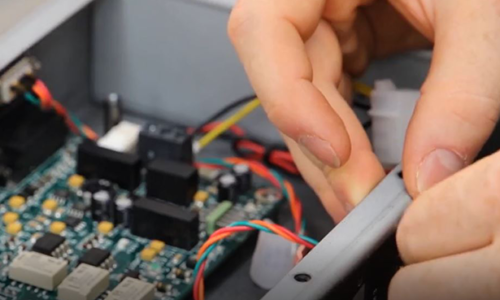
3 ways to mitigate global computer component shortgages
Whether you are purchasing the latest spec gaming machine or an industrial embedded computer for edge data processing, you are likely to be in for a nasty surprise – computer component shortages are hitting the majority of hardware manufacturers due to a range of issues.
In this blog, I take a look at the impact component shortages is having on businesses and 3 ways to mitigate these global issues.

Global component shortages are not a new challenge – overdemand impacting the computer market with price increases and stock shortages are an almost annual event. However, impact to the scale we are seeing today is alarming.
We would have to go back to 2017 and 2007 before that to see challenges to a similar scale where we saw memory and SSD prices rise to unprecedented levels as well as supply issues across a wider range of components.
The pandemic effect
Chip makers continue to struggle to secure more silicon wafers to meet market demand as production capacity has reportedly fallen short of their needs due to the current pandemic driving a huge demand for increase of tablets, computers and smartphones globally.
This shortfall is compounded by the impact of the epidemic on production capacity, put quite simply the chip manufacturers can’t produce fast enough.
To help demonstrate the increase in demand, let’s take a look at a few examples –
- Taiwan’s January export orders (bellwether of global technology demand) surged 49.3% year-on-year to $52.72 billion.
- Apple-supplier Foxconn reported that it expects consumer electronics revenue, which includes smartphones and smart watches, to rise more than 15% in just one year.
- Significant technology advancements from Nvidia, AMD, Intel, Bitcoin miners and computer gamers alike, are creating huge demand from industrial innovators.
The Brexit effect
Supply chain issues don’t stop there either, with other issues like Brexit impacting on customs and import charges for the UK and the US-China trade war compounding problems within local territories, meaning the challenges we are facing is at an unprecedented level.
One thing is for sure, it looks like we are set to see;
- further memory and SSD prices increase
- Sporadic availability of components
- Huge lead-times on some parts (20 weeks is becoming common for many board manufacturers).
When will this end?
Right now, it’s tough to predict, an optimistic view would expect to see matters improve over the summer, however it is my opinion that the current supply rate won’t clear the demand that quickly and with the usual end of the year rise in demand for installed equipment we are likely to be in for a bumpy ride into 2022.
3 ways to mitigate global computer component shortages?
When considering ways to resolve the global shortage of computer components, there are a few resolutions:
1. Accurate forecasting
If your product is using a fixed solution for computing components, where change introduces risk and/or cost then we strongly recommend you work with your suppliers to forecast and secure order for critical components. Captec have already started reaching out to our customer base to support them through these challenging times, being proactive is essential!
2. Considering alternatives
Where forecasting is not possible, then building flexibility in component selection should be considered. Our approach is to qualify multiple options for at risk components through the compliance and V&V processes. Doing this after compliance has been achieved can be a costly exercise, so at this stage evaluating where alternatives can be made without compliance impact is a good start to minimise disruption when issues arise.
3. Mandatory components only
When an issue does arise, make sure you get a full understanding of what it is. We have seen one example where a motherboard was presented with a 24-week lead-time, when we looked into the detail of the issue, we found that the Realtek audio controller was the component causing the issue. And as we didn’t need audio within the application, the boards were manufactured without the controller and the system was delivered to schedule.
To learn more about Captec’s products and services, visit our industrial computers page.



